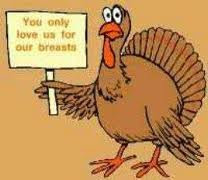
Everyone participates in the reading of legends,
myths, or folklore at some point in their lives. Who hasn’t read Greek
mythology in school, or the folklore of Paul Bunyan, or tall tales of famous,
real people like Calamity Jane or Johnny Appleseed? And what about urban
legends? Urban legends are myths told in modern society, in cities or online,
unlike many of the old tales set in the countryside. Even now, these get passed
around in emails or are posted on the Internet—stories about the serial killer
with the knife hanging around Lover’s Lane, Bloody Mary, the terrible smell
under the bed in a hotel room or even the computer virus story that may have
been true three years ago, but is still sent out as a warning.
A legend (Latin, legenda,
"things to be read") is a narrative of human actions told about
someone that existed in reality, once upon a time, but the true events have
been twisted, making them more fascinating. Legend includes no happenings that
are outside the realm of "possibility,” defined by a highly flexible set
of parameters. These may include miracles that are perceived as actually having
happened. There is the specific tradition of indoctrination where the legend
arose, and in which the tale may be transformed over time, in order to keep it
fresh, vital, and realistic. It is kinda like that game you played with your
classmates in school, where you whisper to the next person a story, and by the
time it comes full circle, that story has changed drastically from what it
began as.
A myth is a sacred or traditional story that
concerns the origins of the world or how the world and the creatures in it came
to be in their present form. Myths serves to unfold a part of the world view of
a people, or explain a practice, belief, or natural phenomenon. Parables and
allegories are myths. Nothing is supposed to be real about it at all, even if
someone mentioned in the story is a real person, like some famous Virginians in
this book. There are stories told about their habits or life that are not true.
Folklore is the traditional beliefs, myths,
tales, and practices of a people, transmitted orally. It is popular, but
unfounded beliefs. Or, as Merriam-Webster says: “traditional customs, tales,
sayings, dances, or art forms preserved among a people.
The flavor of people and their
culture, all interwove with day to day life when settlers came to the New
World. They brought with them their folk tales and beliefs, and founded new
ones in the new country. Some old stories mutated into different ones. There
were older tales told by the Native Americans who were already living in
Virginia before the white man came. Then, when slaves were brought to the New
World, they brought with them tales from Africa and changed them, molding them
to fit their new home.
Today, in modern
times, we continue this with urban legends. Who hasn’t heard of the killer with
the hook in lover’s lane? Or who hasn’t said, “Bloody Mary” while staring into
the mirror, hoping to make a ghost appear? There’s the hitchhiking woman
dressed in an evening gown that is picked up and climbs into the back seat,
giving directions to an address to the driver. Once they arrive at the house,
though, the driver discovers that she has mysteriously disappeared. When he goes
to the door, he is told that his hitchhiker is the daughter of the owner of the
house, who had been killed just after she left a party several years before,
never making it home. But stories like the hitchhiking ghost existed long
before they ended up as urban legends. I know I’ve read stories when it was a
buggy or wagon being driven, not a car. So how many urban legends started as
folk tales by those who colonized America?
Many of the legends
and folk tales told by our ancestors have some kind of moral attached to them.
These may be warnings. Watch your womenfolk and children, so that marauding
Indians could not kidnap them. Don’t dare approach some old woman living in the
woods for a much needed potion to rid one of an unwanted pregnancy, for she may
conjure a spell and convince you to crawl into her oven to be cooked.
All of the above are the start of human
storytelling, most likely around the campfire at night and told by the village
shaman or official storyteller. What stories do you remember and still like to
tell?










